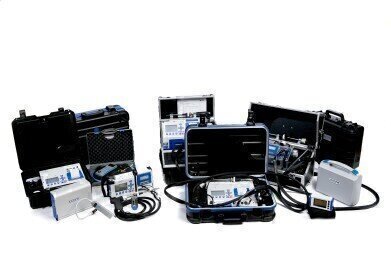Gas analyser
Monitoring Flue Gas Emission with New Analyser
Mar 14 2016
The ecom-J2KNpro, from AS Technical Solutions (UK), utilises electrochemical sensors to measure exhaust emissions, most commonly O2, CO, NO, NO2, and SO2 gases and has an available NDIR bench for measuring CO2, high CO, and CH4. The robust filtering system along with the Peltier gas cooler and 9V high-flow pump ensures a clean sample and high flow rate, which is necessary for accuracy and repeatability. The sensors are monitored which compensates for temperature changes in even the harshest testing environments, and the CO sensor has a dedicated fresh air pump which is activated if a maximum concentration limit is exceeded, usually 4000ppm. The robust sample conditioning features, high-speed flow rate, and advanced sensor monitoring make the ecom-J2KNpro industrial analyser unmatched in performance. Fully loaded with sensor options and features, it can be used in many different applications.These applications include emission testing on stationary engines, generators, compressors, boilers, burners, turbines, heating equipment, pumps, diesel engines, mining equipment (to control DPM), construction equipment, laboratory combustion equipment, alternative fuels research, and many other applications. The J2KN analyser is also used for fuel efficiency testing, combustion tuning, maintenance checks, and emissions compliance reporting. The types of fuel burnt that can be tested on the J2KN series include natural gas, oil, diesel, coal, wood, biomass, butane, propane, biodiesel, and other alternative fuels. Gasoline emissions may be tested with the ecom-J2KNpro industrial, but this requires the NDIR bench (for CO).
A Peltier gas cooler is practically recommended in case of combustible fired processes which produce a high humidity level and it is an important feature for a sustained accuracy by longer lasting measurements, The moisture contained in the exhaust gas can cause damage (especially when SO2 is present) at the instrument and falsify the measurement result. To remove as much moisture, a sample gas cooler is used. Exhaust gas is flown spiral via a long gas path through a surface coated metal body with good thermal conductivity. The gas radiates its heat to this metal body. A Peltier element (semiconductor cooling element) flown by a continuous current is thermally connected with this body and with a second metal body with cooling ribs and ventilation slots. The flow through the Peltier element creates a heat transfer from WARM to COLD, drains the heat from metal body flown by gas and conveys it to the outer cooling body. This heat is conveyed through a vertical forced ventilation to the surrounding air. The condensation issued by the heat loss of the gas drops in a condensation trap. At the cooler outlet the gas has a temperature of ca. 5 °C with a relative saturation of nearly 100 % relative humidity (corresponds to a water steam content < 7 g/m3). The almost complete dehumidification of the sample gas is particularly important for long term measurements and on large combustion plants.
The NOx tubing effectively minimises the leaching losses of water-soluble constituents such as NO2 and SO2. Due to its smooth surface and by increasing the flow rate the formation of condensate and the leaching losses will be minimised. Standard tubing have microscopic pits throughout the length which courses moisture settle resulting in the possibility of NO2 and SO2 being absorbed.
Alternatively by using a heated sampling system is possible to measure water-soluble substances (NO2 and SO2) without washout. A built-in hot gas filter protects the instrument especially for long term measurements from fouling. The maximum exhaust gas temperature when using the heated sampling system is 200 °C.
Digital Edition
AET 29.2 May 2025
May 2025
Water / Wastewater- From Effluent to Excellence: Microbiological assessment of a containerized modular water reuse pilot system- Without water everything comes to a haltAir Monitoring- Probe Sampli...
View all digital editions
Events
Jun 08 2025 Denver, CO, USA
Jun 09 2025 Raleigh, NC, USA
Jun 10 2025 Toulouse, France
Jun 11 2025 Copenhagen, Denmark
Jun 17 2025 Guangzhou, China








.jpg)










